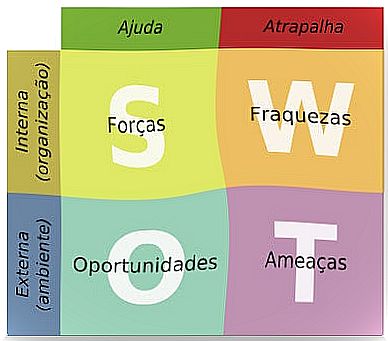How To Do A SWOT Analysis

SWOT analysis, also known as SWOT analysis (Strengths, Opportunities, Weaknesses and Threats), is a tool that allows you to study the situation of a company, institution, project or person, analyzing its internal characteristics and its external situation. This tool allows us to know the real situation in which an organization, company or project finds itself and to plan a future strategy.
When carrying out a SWOT analysis, it is essential to keep in mind that it will provide us with a balance of forces. On the one hand will be weaknesses and threats; on the other hand, strengths and opportunities. It is also necessary to bear in mind that a SWOT analysis is nothing more than a static model of reality at a specific moment. Therefore, it is not permanent, but modifiable according to the circumstances of its realization.
When performing a SWOT analysis, the first thing is to select the objective on which we want to make a decision. It can be a company, an institution, a project or even a person. Once the objective has been defined, an internal analysis will be performed and, later, an external analysis will be carried out. Afterwards, the data obtained will be entered into a matrix that will allow us to assess the situation of the analyzed object and take appropriate measures.

Internal analysis
In the internal aspect of the SWOT analysis, two factors must be addressed: strengths and weaknesses. Strengths are attributes that allow you to generate an advantage. If we are conducting the analysis of a company, we will have to analyze the availability of resources, personnel, assets and product quality, among others, to see if these are the strengths that allow this company to generate a competitive advantage over its competitors .
On the other hand, weaknesses would be all the elements, energy resources, skills and attitudes of the company that pose an impediment or that can limit the company. Weaknesses are nothing more than internal problems, which need to be identified and eliminated.
external analysis
A company or a person cannot exist without its surroundings. In SWOT analysis, the isolated internal analysis would not be correct because it does not explain how the relationship with the exterior is given. Therefore, the next step is to carry out an external analysis to find out what are the opportunities and threats found in the context. A first step to discover them is to look for which elements that have some relationship with the organization can be found.
Opportunities are going to be the positives, while threats are going to be the negatives. Opportunities are generated in the surroundings and, once identified, can be seized. On the other hand, threats are the elements that can harm the organization, and depending on the case, they may require the projection of an adequate strategy to be circumvented.
SWOT analysis matrix
Once these steps are completed, it is necessary to place all the data obtained in a matrix, launching them in pairs. The more systematized the data obtained, the easier it will be to visualize them. Placing different tags or scripts to establish each element in the two analyzes obtained above will help this part of the process.

By placing the data in the matrix, we will have, on the one hand, the strengths and opportunities that correspond to the positive aspects of our company and its environment. These will configure the potentials: they show us the lines of action and the decisions to be taken. The other part of the matrix will show the limitations, determined by the combination of weaknesses and threats. These limitations will be a warning.
This matrix also leaves a third combination, those formed in the diagonals. The combination of strengths and threats forms the risks, while the combination of weaknesses and opportunities the challenges. Both risks and challenges will be indicators of the path to be followed, determining future actions.
Decision-making
At this point, we have already completed our SWOT analysis. All that remains is for us to evaluate the matrix data and make the appropriate decisions. The entire process followed so far is based on decision making, specifically on ordering the information needed to make rational decisions based on objectivity. Furthermore, SWOT analysis will also allow us to create future strategies.
Although SWOT is made seeking to make appropriate decisions, the results will depend, to a great extent, on the quality of the information. The better the information included in the internal and external analysis, the less likely we are to make mistakes.
You are now ready to do your SWOT analysis and can work to fix weaknesses, address threats, maintain strengths, and exploit opportunities.









